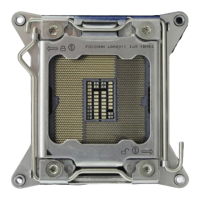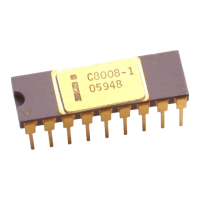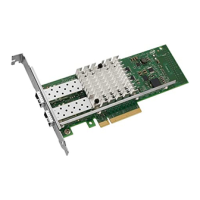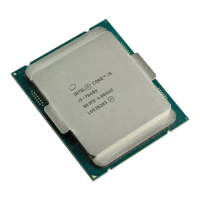Design Guide 19
Introduction
1.3 System Overview
The E7500 chipset is Intel’s first generation server chipset designed for use with the Xeon
processor. The architecture of the chipset provides the performance and feature-set required for
dual-processor based severs in the entry-level and mid-range, front-end and general-purpose server
market segments. A new chipset component interconnect, the Hub Interface 2.0 (HI2.0), is
designed into the E7500 chipset to provide more efficient communication between chipset
components for high-speed I/O. Each HI2.0 provides 1.066 GB/s I/O bandwidth. The E7500 MCH
has three HI2.0 connections, delivering 3.2 GB/s bandwidth for high-speed I/O, which can be used
for PCI/PCI-X bridges. The system bus, used to connect the processor with the E7500 chipset,
utilizes a 400 MHz transfer rate for data transfers, delivering 3.2 GB/s. The E7500 chipset
architecture supports a 144-bit wide, 200 MHz DDR memory interface also capable of transferring
data at 3.2 GB/s.
In addition to these performance features, E7500 chipset-based platforms also provide the RASUM
(Reliability, Availability, Serviceability, Usability, and Manageability) features required for entry-
level and mid-range servers. These features include: Chipkill* technology ECC for memory, ECC
for all high-performance I/O, out-of-band manageability through SMBus target interfaces on all
major components, memory scrubbing and auto-initialization, processor thermal monitoring, and
hot-plug PCI. For a complete list of the features on this platform, refer to the component datasheets
listed in Section 1.1.
Simultaneous Switching
Output (SSO)
Effects which are differences in electrical timing parameters and degradation in
signal quality caused by multiple signal outputs simultaneously switching voltage
levels in the opposite direction from a single signal or in the same direction.
These are called odd mode and even mode switching, respectively. This
simultaneous switching of multiple outputs creates higher current swings that
may cause additional propagation delay (“push-out”) or a decrease in
propagation delay (“pull-in”). These SSO effects may impact the setup and/or
hold times and are not always taken into account by simulations. System timing
budgets should include margin for SSO effects.
Standby Power Rail Standby power is supplied by the power supply during times when the system is
powered down. The purpose is to maintain functions that always need to be
enabled, such as the date and time-of-day within the BIOS. The power supply
provides a +5 VSB power rail.
Stub The branch from the bus trunk terminating at the pad of an agent.
Trunk The main connection, excluding interconnect branches, from one end agent pad
to the other end agent pad.
Undershoot The minimum voltage extending below VSS observed for a signal at the device
pad.
VCC_CPU VCC_CPU is the core power for the processor. The system bus is terminated to
VCC_CPU.
Victim A network that receives a coupled crosstalk signal from another network is called
the victim network.
VRM 9.1 “VRM 9.1” refers to the Voltage Regulator Module specification for the Xeon
processor. It is a DC-DC converter module that supplies the required voltage and
current to a single processor.
Convention/Terminology Description
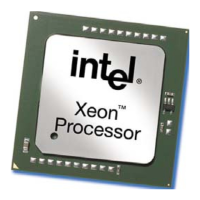
